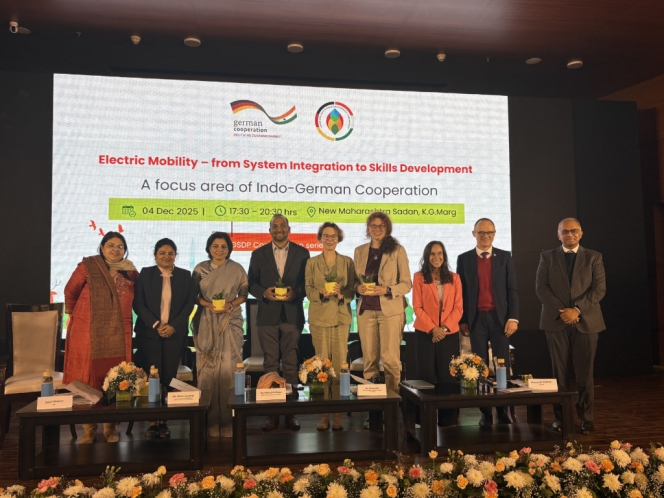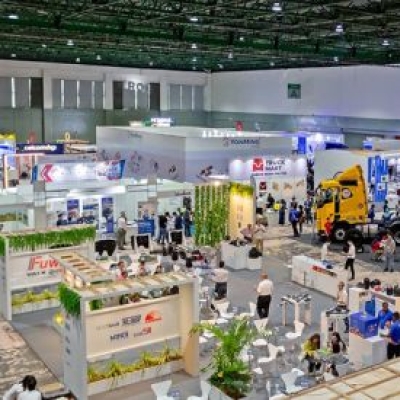- Firestone Industrial Products Company
- LLC (FSIP)
- Bridgestone
- Bridgestone Americas
- Firestone Airide
- Justin Monaghan
COVID Accelerated Lot Of Things For The Auto Care Industry - Bill Hanvey
- By T Murrali
- December 19, 2020

Q: What are the challenges faced by the members of the Auto Care Association during the COVID-19 induced scenario?
Hanvey: While our association’s Government Affairs team was able to successfully lobby and petition all levels of Government here in the United States to categorise our industry as “essential,” which allowed our members to continue operating their businesses, there are still a number of challenges facing our members right now. The overall decline in Vehicle Miles Travelled by Americans we saw in March/April this year has had an impact on the demand for parts and services in the aftermarket.
Additionally, all businesses—not just auto care industry businesses—have to navigate continuously changing health and safety regulations, a bureaucratic process for receiving emergency relief or stimulus funding, figuring out how to pay back emergency Government loans, and the increased potential for lawsuits if a customer or employee becomes ill.
Despite these challenges facing our industry, we’ve seen some positive trends in the aftermarket since the spring, including a rise in Vehicle Miles Travelled, an increase in the forecasted sales of light vehicles, and an increase in Do-It-Yourself (DIY) activity.
Q: What are the leanings for Auto Care Association from the COVID- 19-induced new normal and how it supported its members during this time?
Hanvey: As an association, we remain optimistic, despite the obstacles our industry has been facing. We’ve been fighting for our members on all fronts, including providing a dedicated and comprehensive Coronavirus resources webpage, lobbying all levels of Government for “essential” status, assisting members with navigating Government regulations and loans, as well as surveying members and tracking industry trends to keep both our association and our members informed on the latest developments in this battle with COVID-19 on our industry and our country.
Q: How has the ‘Be Car Care Aware’ campaign helped during COVID-19?
Hanvey: The Car Care Council has continued to inform and instruct vehicle owners on how to maintain their vehicles during COVID-19, even if their cars are spending more time in their driveways than on highways.
Q: What kind of role does the Auto Care Association play when the geopolitical imbroglio between different nations erupt leading to changes in the tariff, affecting the business of your members?
Hanvey: The Auto Care Association’s priority is and will always be the protection of our members and our industry’s future. Our Government Affairs team works year-round to defend the interests of our members, whether it’s for vehicle data access in Massachusetts or testifying before Congress about the impact of tariffs on complex global supply chains. We, as an association, also work extensively to facilitate meetings between our members and their congressional representatives to form meaningful relationships that can result in the prioritisation of our industry’s needs. We also work with our sister associations in-country to further demonstrate the impact of tariffs on multiple economies and get those messages to lawmakers.
 Q: Can you update on the issues related to tariffs and their implications?
Q: Can you update on the issues related to tariffs and their implications?
Hanvey: Our association continues to engage with the United States Government to seek means of relief for our members and industry from the negative impact of tariffs. We have been able to assist many of our members with obtaining exemptions from some of these burdensome tariffs, but we will continue engaging with the Government on this issue until the elimination of these tariffs is achieved.
Q: How do you see the growth of the US aftermarket vis-à-vis the global aftermarket industry?
Hanvey: Despite COVID impacts, forecasts for GDP growth in other countries for 2021 and 2022 show countries emerging from the pandemic and returning to positive growth, according to IHS Markit. Demand was improving for light vehicles as much of the world reopened, but of course, with new closures happening as a “second wave” permeates, that could obviously be affected. In the US, August sales were advancing recovery in auto demand since April as incentives, reopenings and stimulus helped auto demand defy economic indicators.
Again, the second wave happening now is likely affecting that. The aftermarket continues to demonstrate that it’s a recession-resilient industry and forecasts show a quicker recovery than expected due to more DIY and more preference for personal rather than public modes of transportation. More reliance on the current VIO means the vehicle age will continue to grow as people keep their cars for longer meaning more opportunities for the aftermarket to keep money in wallets and offer more convenience in a newly inconvenient world. While what is happening now is referred to as a V-shaped recovery, the emergence of a second wave could possibly point to a W-shaped recovery.
Q: What kind of changes do you see in the aftermarket with the automotive industry being triggered by either legislation or regulation?
Hanvey: The aftermarket continues to change and adapt to new technologies, and it absolutely presents an opportunity to standardise repair procedures to keep consumers safe as well as a level playing field for the industry. In fact, the Auto Care Association Emerging Technologies Workgroup has been working to identify these challenges and turn them into opportunities for the aftermarket as well as working to ensure that the aftermarket is included in the evolving transportation ecosystem and that there is a level playing field for all.
An Auto Care Emerging Technologies workgroup is defining a set of best practice recommendations to standardise safe and efficient ADAS sensor recalibration processes for all passenger vehicles. That workgroup is also defining standards recommendations that ensure fair and equitable access to embedded device software needed to maintain and repair today’s vehicles.
Secure Vehicle Interface (SVI) – our work to standardise the transmission of wirelessly generated vehicle data is critical to the future of the aftermarket.
Q: Today, almost all the vehicles, including trucks, are connected in one way or the other. What are the new challenges that emerge out of these connected vehicles?
Hanvey: The foremost challenge our industry is facing with “connected” vehicle technology is ensuring access to the telematics data generated by today’s vehicles for the aftermarket and vehicle owners. Without access to this vehicle data, the vehicle manufacturers are able to shut out vehicle owners and their independent repair shops, which stifles competition and increases prices. This is precisely why we returned to the battleground of Massachusetts this year to present a ballot question to voters intended to amend the original Right to Repair law and put consumers in control of their vehicle. We were victorious with a 75% yes vote.
Q: The Auto Care Association has been working on developing the adoption of the secure vehicle interface to access data cyber-securely utilising ISO standards. What is the update on this?
Hanvey: The Auto Care Association, along with Michelin and Enterprise Holdings, produced a demonstration in September for the European Commission and other interested constituents around the world on the Secure Vehicle Interface (SVI). SVI is a standards-based technology that enables secure cyber access to in-vehicle data to trusted third parties. The European Commission is currently working towards delivering a legislative proposal on the critical topic of access to in-vehicle data, which will define the future of the mobility ecosystem in Europe and around the world.
Viewed globally by over 300 participants, the webinar included a live demonstration of the capabilities of SVI, examples of potential applications and new opportunities presented by the technology.
Q: How is the Auto Care Association preparing its members to cater to electric mobility?
Hanvey: This is an important development that the entire industry needs to work together on to prepare future technicians. We work with partners such as TechForce, ASE and our community programmes to provide scholarships to young professionals looking to pursue careers in the industry and share information that showcases what the “new” reality of incoming technicians and why these jobs are so viable.
Q: What is the feedback to ACES (Aftermarket Catalogue Exchange Standard) and PIES (Product Information Exchange Standard); do they need any amendments?
Hanvey: The Auto Care Association recently received a federal award that will grant the association $299,000 from the International Trade Administration’s (ITA) Market Development Cooperator Programme (MDCP) award to help the automotive aftermarket industry facilitate the implementation and adoption of ACES and PIES technology standards in China and key Latin American markets.
We also continued to expand our standards coverage this year. On the ACES front, VCdb South America will soon become available, providing vehicle content in our VCdb database for Chile, Colombia, Argentina and Brazil. Spanish Translations for the VCdb, Qdb, PCdb and PAdb will also be available as an add-on. We’ve expanded the catalogue and access for North American companies to do businesses in Latin American countries despite closed borders.
 Q: Can you update on UniLink?
Q: Can you update on UniLink?
Hanvey: The UniLink dataset is available and now includes 96 percent of the 1.4 billion global VIO. The UniLink database contains 23 years of information that is constantly growing and extending and is organised into 16 high-level original equipment manufacturing attributes. Serving as a high-level bridge to ACES so users can see which parts fit with their product portfolio, UniLink allows users to identify new countries, makes and models to sell existing parts already in their portfolio – eliminating redundancies in the supply chain. Aftermarket companies can now determine new markets across the globe for underperforming inventory parts that are sitting and collecting dust in the warehouse and connect product data under a unified platform approach to reduce redundant, time-consuming research and avoid costly errors. Our market feedback tells us that UniLink will help increase sales (five to fifteen percent).
Q: Can you update on Auto Care Association’s working model of the secure vehicle data from OEMs?
Hanvey: Now that we have won the Right to Repair ballot for the second time in Massachusetts, we hope to work with the automakers to implement SVI.
Q: Reports are doing the rounds that with more electronics and software entering cars/trucks, the OEMs might do away with the OBD port and will store data wirelessly, exempting them from the current law. Has the Auto Care Association taken cognisance of this as this move may bother your members / independent repair shops?
Hanvey: The Auto Care Association is aware that the OEMs are currently and actively opposed to allowing third parties to access the data generated by vehicles today and that they are spending millions of dollars to prevent independent repairers and vehicle owners from gaining access to this data. After a decisive victory for the Right to Repair initiative in Massachusetts this November, the public has put the OEMs on notice that they want access to their vehicle data. Should the OEMs move to an entirely cloud-based system and do away with the OBD port on vehicles, we will continue to fight for the rights and abilities of the American people to access their vehicle data and service their cars wherever they see fit.
Q: Can you tell us about your initiatives in building professional skills to your members?
Hanvey: The Auto Care Association’s education resources include networking and conference events, market research reports and analyses, publications, websites, scholarships and a partnership with the University of the Aftermarket, all with the goal of providing continuous professional development opportunities. The Auto Care Association also recognises and celebrates members of our industry each year who go above and beyond to equip their employees with the education and skills they need to be successful in today’s auto care industry through the Automotive Career and Education (ACE) Award.
Q: Can you tell us about the initiatives taken to support the sustainable growth of your industry?
Hanvey: COVID really accelerated a lot of things for the industry. A shift to digital and needing even more data to make better business decisions was crucial the moment our world changed earlier this year. Our industry has always been driven by a commitment to innovation and agility, and this has been an even bigger part of the aftermarket’s identity during the pandemic. We continued to build on our foundation of innovative products and services to keep the supply chain running efficiently, provide dynamic access to the real-time marketplace and help companies run their businesses at top capacity.
Our TrendLens platform, which houses our Demand Index tool is a prime example. The aftermarket needs to know how the changing economic world is impacting their businesses:
- Day to day changes to vehicle miles driven.
- Record highs and lows in temperatures across the US.
- Consumer confidence fluctuations that shift with every news cycle.
Searching for the latest economic and industry data (like the ones mentioned) to help inform business decisions can be frustrating: multiple data sources, inconsistent data, out of date data, and costly subscriptions. We tackle those big questions with TrendLens.
TrendLens puts curated and current interactive industry insights at the fingertips of all of our users. The platform enables users to understand how market influencing factors are affecting the industry with the most complete and up to date data sets available, all in one place with innovative ways to compare and contrast data to give it context.
We accelerated the production timeline of TrendLens by several months in response to the COVID crisis, and it should be an absolutely invaluable tool in the industry’s arsenal. But we took it a step further with Demand Index.
Demand Index lets aftermarket companies compare their performance to the market. It provides sales performance data with both a unit index and dollar index for 38 different product groups, from air filters to shocks and struts, and growing.
More data and better value are provided by the Demand Index than any other tool, and what we’re hearing is that buyers and manufacturers are finally coming to the table and speaking the same language and correlate efforts to ROI thanks to the tool. (MT)
Vingroup Announces $3 Billion Multi-Sector Investment In Telangana
- By MT Bureau
- December 09, 2025
Vietnam’s Vingroup has signed a strategic memorandum of understanding (MoU) with the Government of Telangana, outlining a comprehensive plan to develop a multi-sector ecosystem through a proposed phased investment of USD 3 billion. This expansive collaboration aims to drive socio-economic growth in the Indian state through major initiatives in smart urban development, electric mobility, healthcare, education, tourism and renewable energy.
The partnership’s most ambitious component is the planned creation of a large-scale smart city. This new urban area, designed to accommodate approximately 200,000 residents, will integrate sustainable planning principles with international-standard amenities and is expected to generate significant local employment. Supporting this community, Vingroup will develop essential social infrastructure, including international-grade multi-specialty hospitals and an integrated K-12 school system.
A key pillar of the initiative is establishing a sustainable electric mobility ecosystem. This involves launching India's first large-scale electric taxi service within Telangana, supported by a widespread network of charging stations. To ensure a green power supply for this fleet, urban areas and industrial zones, Vingroup further proposes to develop a substantial solar farm. The collaboration will also enhance Telangana’s tourism appeal through a dedicated complex featuring theme parks and wildlife attractions.
The Telangana government has committed to supporting these projects by facilitating land allocation, assisting with master planning and administrative procedures and mobilising the necessary connecting infrastructure. This foundational agreement not only marks a significant step in Vingroup’s international expansion but also strengthens economic and business ties between Vietnam and India, creating a framework for future cooperation and mutual growth.
A Revanth Reddy, Hon’ble Chief Minister, Government of Telangana, said, “The USD 3 billion investment by Vingroup is a massive vote of confidence in the ‘Telangana Rising’ vision, particularly our focus on sustainable urban development and green infrastructure. This is more than capital; it’s a partnership to build a futuristic, net-zero city and introduce India’s first large-scale electric taxi fleet, directly improving the quality of life for our citizens. Our government guarantees accelerated execution to ensure this global vision becomes a local reality.”
D Sridhar Babu, Hon'ble Industries Minister, Government of Telangana, said, "Vingroup's multi-sectoral commitment, spanning smart cities, solar power and advanced social infrastructure like hospitals and schools, demonstrates the stability and breadth of Telangana’s industrial policy. We are committed to translating this significant capital inflow into local opportunity, positioning Telangana as the gateway for Vietnamese and South-East Asian investment into India's fastest-growing economy."
Sanjay Kumar, IAS, Special Chief Secretary to the Government, Government of Telangana, said, “We welcome Vingroup’s presence in Telangana and recognise the achievements the Group has made in Vietnam, particularly in urban development, green infrastructure and electrified transportation. With the Group’s extensive expertise and capability to execute large-scale projects, we believe that this cooperation will mark an important step forward in shaping a modern and sustainable urban landscape and improving the quality of life for the people of Telangana.”
Pham Sanh Chau, CEO of Vingroup Asia and VinFast Asia, said, “Vingroup sees tremendous potential in Telangana and we aspire to build a long-term partnership with the state government. With our proven track record in delivering mega urban developments, large-scale infrastructure and a comprehensive electric mobility ecosystem, we believe that our collaboration with Telangana will generate tangible value, promote sustainable development and enhance the quality of life for local residents.”
- Indo-German Partnership for Green and Sustainable Development Goal
- Christine Toetzke
- Federal Ministry for Economic Cooperation and Development
India And Germany Discuss Electric Mobility Ecosystem Transformation
- By MT Bureau
- December 05, 2025

India and Germany convened a high-level roundtable under the Indo-German Partnership for Green and Sustainable Development (GSDP) to discuss solutions for advancing electric mobility ecosystems. The ninth edition of the GSDP Conversation Series focused on ‘Electric Mobility: From System Integration to Skills Development’.
The roundtable brought together senior officials from key central ministries, state and city administrations, public transport undertakings, distribution companies (DISCOMs), industry leaders and international partners to address the shift from fragmented pilots to a coordinated, ecosystem-wide transformation.
The discussion underlined that India can only achieve its electric mobility targets through integrated planning across various sectors, including renewable energy, transportation, manufacturing, finance and skills. Stronger coordination among the central government, states and cities was also noted as key to successful implementation.
The participants prioritised five key themes to shape the next phase of India’s e-mobility transition:
- Multimodal Electrification: Integrating metro, bus, shared mobility and last-mile services into a unified electric transport system.
- Charging Infrastructure and Grid Readiness: Enhancing coordination with DISCOMs, ensuring land and power capacity, standardising charging systems and strengthening battery safety and circularity.
- Financing and Procurement: Improving bankability, payment security, risk sharing, contract structures and financial instruments for e-buses and commercial EVs.
- Skills and Gender Inclusion: Addressing shortages in EV engineering, charger installation, battery management, safety and digital mobility services while expanding opportunities for women.
- Indo-German Collaboration: Advancing cooperation in areas such as grid management, multimodal planning, standardisation, battery circularity and vocational training.
Christine Toetzke, Director General for Asia, Latin America, Middle East & Eastern/Southeastern Europe, Federal Ministry for Economic Cooperation and Development (BMZ), Germany, said, “Germany and India share a long-standing partnership rooted in trust, ambition, and a shared vision for a greener future. The Green and Sustainable Development Partnership is central to our international engagement, reflecting our joint commitment to make development both climate-compatible and socially inclusive. Electric mobility is not merely a technological shift; it is a transformation of how our societies move, how we design our cities, and how we create opportunities for future generations. As India advances this transition at a remarkable scale and speed, Germany stands ready to support with system-level planning, vocational skills development and innovation in areas such as battery management and circular economy solutions. Our cooperation is a long-term investment in cleaner air, safer mobility, and more equitable access to opportunity for all.”
Senior officials emphasised the importance of aligning national schemes with local implementation capacity, noting that India now requires system-wide approaches that combine depot electrification, grid readiness, multimodal integration, transparent procurement models and a skilled workforce. The dialogue reaffirmed the commitment of both nations to accelerate clean, efficient and inclusive mobility solutions.
- Hagerty UK
- Vehicle Excise Duty Exemption
- VED Exemption
- Historic & Classic Vehicles Alliance
- Classic Cars
UK Chancellor Maintains Vehicle Excise Duty Exemption For Classic Cars
- By MT Bureau
- November 27, 2025

The UK's cherished classic car community can finally breathe a collective sigh of relief. The decisive action by Chancellor Rachel Reeves in the Autumn Budget to maintain the Vehicle Excise Duty (VED) exemption for vehicles over 40 years old has ended a prolonged period of uncertainty, securing a stable future for this vital sector. Mark Roper, Managing Director of Hagerty UK, welcomed this clarity, noting that the confirmed freeze on fuel duty further solidifies a supportive environment for owners. He underscores that this is a significant win for the GBP-7.3-billion industry that supports over 100,000 jobs and contributes GBP 3 billion annually to the UK economy, all while championing an inherently sustainable form of motoring.
This perspective on sustainability is reinforced by Dale Keller, CEO of the Historic & Classic Vehicles Alliance (HCVA), who affirms that the tax exemption logically aligns with environmental objectives. Classic vehicles, preserved as moving heritage, have a negligible lifecycle carbon footprint compared to new manufacturing and are driven infrequently. The original principle of the exemption remains valid, as applying a modern tax to these rarely used assets would be inequitable.
Alongside the VED news, the Chancellor confirmed the continuation of the MOT exemption for classic cars, though this will remain under review. On this point, Roper of Hagerty UK strikes a note of caution, observing that many within the industry advocate for an annual roadworthiness check. He notes that a great number of responsible classic owners voluntarily submit their vehicles for an MOT each year, valuing the independent assurance of safety and mechanical integrity it provides.
For Hagerty UK, as a specialist insurer deeply embedded in this world, the government’s affirmation is a powerful endorsement of the sector's cultural and economic value. Through its vibrant Clubhouse at Bicester Heritage and unique events like RADwood, Hagerty is actively fostering this passionate community. Similarly, the HCVA continues its mission to protect and promote the diverse ecosystem of specialists, restorers and businesses that form the backbone of this multi-billion-pound industry, ensuring its legacy for generations to come.
Mahindra Racing Extends Formula E Involvement With GEN4 Manufacturer Commitment
- By MT Bureau
- November 26, 2025

Mahindra Racing has solidified its long-term future in electric motorsport by confirming its manufacturer commitment to the GEN4 era of the ABB FIA Formula E World Championship, starting in 2026/27. This announcement, made during the unveiling of its new M12Electro race car in India, extends a relationship that began in 2013 when Mahindra stood as both a founding team and the first OEM to join the all-electric series.
The team's current trajectory underscores the significance of this pledge. Following a dramatic 18-month transformation under CEO and Team Principal Frederic Bertrand, Mahindra Racing has evolved from a backmarker into a consistent front-runner. This resurgence was powered by the redesigned M11Electro, in which drivers Nyck de Vries and Edoardo Mortara collectively secured five podium finishes in Season 11, catapulting the squad to a stellar fourth place in the world championship. The newly launched M12Electro is the intended vehicle to maintain this status as a top-five contender and a regular threat for podium positions in the forthcoming season.
The technical landscape for GEN4 promises to further electrify the sport. The next-generation cars will boast a peak race power of 450 kw, with a potent 600 kw available in ATTACK MODE to empower aggressive overtaking. Enhanced strategic possibilities will come from a race energy capacity of up to 55 kWh and a remarkable 700 kw of regenerative braking. In a continued commitment to sustainability, the GEN4 chassis will be produced from 100 percent recyclable materials and will feature two distinct aerodynamic configurations – high-downforce for qualifying and low-downforce for races – to optimise performance.
Mahindra's ambition is to leverage this new regulatory chapter to build on its renewed momentum, chase incremental gains and establish itself as a confirmed championship contender against elite manufacturers like Porsche and Jaguar. This competitive platform also serves a broader purpose, aligning with the Mahindra Group’s sustainability initiatives. The team, the first in Formula E to earn the FIA’s Three-Star Sustainability Accreditation, has embarked on its ‘Planet Positive’ programme. This initiative is dedicated to driving positive impact in communities and economies, accelerating climate solutions and using the intersection of sport and technology as a catalyst for a better future.
R Velusamy, Chairman, Mahindra Racing, said, "Mahindra Racing has always been a symbol of our commitment to the Race to Road journey – where cutting-edge innovation on the track directly shapes the clean, intelligent and high-performance mobility solutions we deliver to customers. Formula E is a powerful platform for innovating new technology, giving us the ability to experiment, learn and advance electric powertrain efficiency, sustainable materials and software intelligence. As we step into the GEN4 era, our ambition only grows stronger. Continuing this journey till 2030 is a testament to our belief in the sport, in electrification and in India’s role in leading global sustainable mobility. We are proud to champion this future, and GEN4 represents an exciting new chapter for Mahindra Racing and the Mahindra Group.”
Frederic Bertrand, Team Principal, Mahindra Racing, said, “I’m delighted to share this announcement that Mahindra Racing will remain in Formula E as a manufacturer for the GEN4 era. As a team, we have been on a fantastic journey over the past two seasons. What we have built and achieved as a group has been exceptional, and with this announcement, we now have the platform to keep growing and developing and achieve even greater success in the future. None of this would be possible without our colleagues across the Mahindra Group. They have bought into the project and the vision, and we will keep working hard to not only make India proud but also showcase exactly why it has the potential to be a major player on the world stage in the automotive and technology industries. Their enthusiasm to ‘Scream Electric’ is hugely inspiring to the whole team, and we will continue to represent them with pride in this next exciting chapter of our Formula E story in the coming years.”
Jeff Dodds, CEO, Formula E, said, “We’re thrilled to confirm Mahindra’s long-term commitment to the GEN4 era of the ABB FIA Formula E World Championship. As one of our founding teams, Mahindra has been with us since the very beginning, consistently championing electric racing and innovation. Their bold vision for sustainable mobility and continued investment in advanced EV technology perfectly align with Formula E’s mission. Mahindra’s enduring presence not only strengthens our position in a key market but also reinforces Formula E’s role as a global platform for driving positive change. We’re excited to see what they’ll achieve in this next chapter of performance and progress.”
Marek Nawarecki, Senior Circuit Sport Director, FIA, said, “Following the GEN4 reveal and the really positive sentiment reported, we are pleased to announce Mahindra as the sixth manufacturer to commit to Formula E’s GEN4 era. This is testament to the relevance of the road map we are implementing in Formula E for OEMs. GEN4 underscores just how far the ABB FIA Formula E World Championship has come since 2014 and we are looking forward to continuing this journey with Mahindra as one of the founding teams and partners.”






Comments (0)
ADD COMMENT